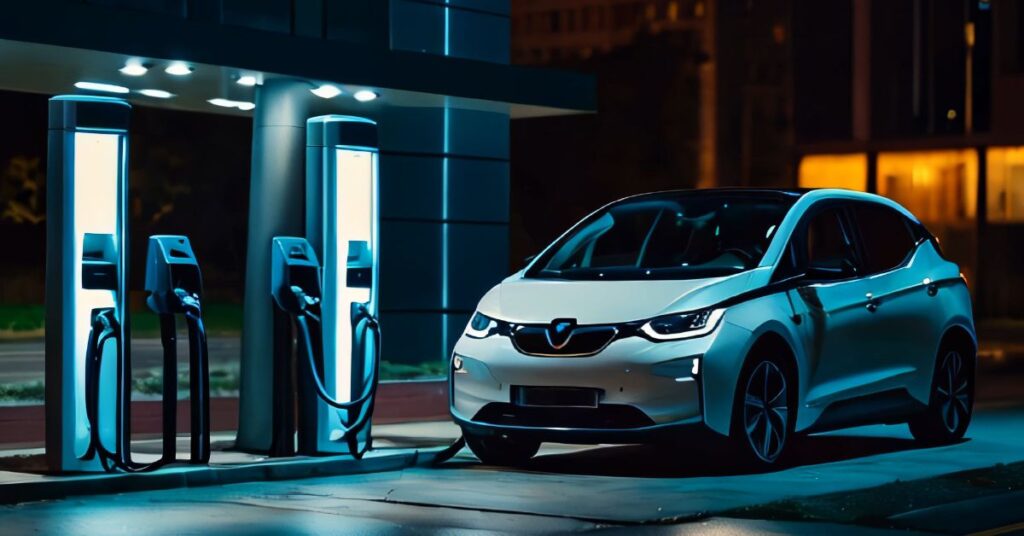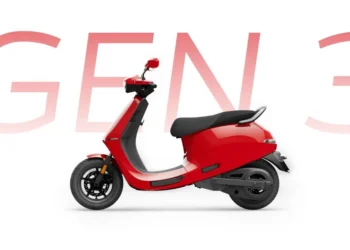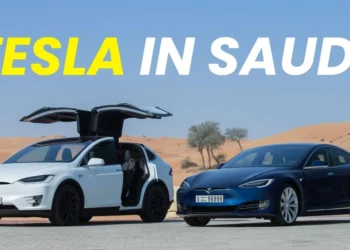In a significant statement, Commerce and Industry Minister Piyush Goyal recently announced that India’s electric vehicle (EV) sector is ready to move forward without any further subsidies. This marks a turning point in the government’s approach to promoting electric mobility in the country. Goyal affirms that the existing policies and incentives are sufficient to ensure the sector’s growth and sustainability. Let’s explore the details of his statement and what it means for India’s EV ecosystem.
Table of Contents
Minister Piyush Goyal’s Stance: No More EV Subsidies Are Needed In India

During a recent meeting with stakeholders from the EV industry, Piyush Goyal highlighted that the Indian electric vehicle ecosystem has matured and is now self-sustaining. According to the minister, the existing subsidies and incentives already in place are sufficient to help the sector achieve significant growth and development.
Key Points from Piyush Goyal’s Statement:
- “The E-mobility sector is ready and set to fly,” Goyal emphasized that the industry no longer needs additional incentives.
- Industry representatives across various sectors agreed that once the current subsidy schemes end, no further financial support will be needed.
- Existing schemes like the PM Electric Drive Revolution in Innovative Vehicle Enhancement (PM E-DRIVE) and Production-Linked Incentive (PLI) schemes are sufficient to continue the momentum of EV adoption.
Why Piyush Goyal Believes No More EV Subsidies Are Needed In India
There are several reasons why Piyush Goyal and the Indian government believe the electric vehicle sector is ready to move forward without additional subsidies:
- Economic Case for EVs
One of the main reasons behind the call for no more subsidies is the growing economic viability of electric vehicles. As Piyush Goyal pointed out, EVs and hybrids are becoming increasingly cost-competitive compared to internal combustion engine (ICE) vehicles. With advancements in battery technology, the cost of EVs has dropped significantly, making them more attractive to consumers.
- Existing Incentives Are Sufficient
The government is already offering a wide range of incentives under schemes like FAME-II and PM E-DRIVE, along with the Production Linked Incentive (PLI) scheme for automobile manufacturers. These existing policies provide a solid foundation for the industry to thrive without additional financial aid.
- Support for Charging Infrastructure
In addition to vehicle-related subsidies, the government is focusing on the development of charging and battery-swapping infrastructure. Piyush Goyal announced plans to simplify the setting up of charging stations at petrol pumps, saying, “We want the RWAs and office complexes to have these charging stations. Nobody needs to invest in setting up these stations – auto and battery companies are happy to make the investments.”
- Battery Swapping as a Business Opportunity
Another area of interest is battery swapping, which is expected to see significant growth. Industry leaders predict the sector will be worth $20 billion by 2030. While the government is not introducing new subsidies for this, it remains a business opportunity for the private sector.
Industry’s Unanimous Agreement on No More Subsidies
The minister’s remarks came after a series of consultations with stakeholders in the EV sector, where representatives from major companies like Hero MotoCorp, Mahindra & Mahindra, TVS Motor Company, and Ather Energy all voiced their support for the idea that no new subsidies were necessary. Piyush Goyal stated, “Everybody was unanimous in the room across sectors that they don’t require subsidies.”
This consensus highlights the growing maturity of the EV sector, where manufacturers are confident about their ability to operate independently without needing further government handouts.
Industry Voices on the Issue
Maxson Lewis, Founder & CEO of Magenta Mobility, echoed Piyush Goyal’s sentiment, stating, “At this point in time, on an average globally, you need one public charging station for close to around 40 to 50 electric vehicles. Currently, we have close to around 35 lakh electric vehicles in India, but only a small segment of it is actually the passenger four-wheeler segment which essentially looks out for charging infrastructure on the highways.”
He added, “The best part is I think the government’s intentions are in the right way. The execution needs to be seen.”
This highlights the need for targeted support where it matters the most, particularly in building infrastructure rather than offering blanket subsidies.
Puneet Gupta, Director, S&P Global Mobility:
“Newer incentives for EVs are not needed at the moment. Centre is offering an array of benefits to promote EV adoption. Many industry players have yet to fully leverage existing initiatives like auto PLI schemes. We anticipate 2025-2026 to be a key period for the EV ecosystem in India.”
These statements show that while the industry is growing, there is confidence that the sector can thrive without the need for additional financial incentives.
Current Government Schemes Supporting EV Growth

India already has multiple EV subsidy schemes in place to support the transition to electric mobility:
- PM E-DRIVE Scheme: Under this scheme, the government offers incentives for electric two-wheelers, three-wheelers, buses, and even e-ambulances. It also provides funding for the establishment of charging stations.
- Production-Linked Incentive (PLI) Scheme: This scheme aims to boost EV manufacturing and components in India, with a budget of ₹25,938 crore.
- FAME-II Scheme: The second phase of the Faster Adoption and Manufacturing of Hybrid and Electric Vehicles scheme aims to expand charging infrastructure and provide upfront incentives for buyers of electric vehicles.
Piyush Goyal reiterated that the government has already set up a strong framework to support the industry. Speaking to stakeholders in a recent meeting, he emphasized, “The E-mobility sector is ready and set to fly. They don’t need additional incentives. In almost all sectors now, there are options available by which e-mobility can be marketed. It’s a good economic case to move from ICE engines to EVs and hybrids.”
What Does This Mean for India’s EV Future?
India’s electric vehicle sector is poised to enter a new phase of growth, with or without further subsidies. The key drivers of this transition include:
- Lower EV Prices: As battery technology improves and economies of scale kick in, EVs will become more affordable for the masses.
- Enhanced Charging Infrastructure: With self-regulated guidelines for setting up charging stations at locations like petrol pumps and office complexes, the country is set to see a rapid expansion in charging infrastructure.
- Private Sector Innovation: Companies in the EV space are investing in research and development, pushing the boundaries of innovation and driving the market forward.
In this context, Piyush Goyal’s statement that no more EV subsidies are needed in India may signal a positive turning point for the industry. The focus can now shift from financial incentives to ensuring that charging infrastructure and battery-swapping solutions are widespread and accessible.
Key Takeaways from Piyush Goyal’s Statement:
- India’s EV ecosystem is ready to grow without further subsidies.
- Existing government schemes like PM E-DRIVE and PLI are sufficient for continued EV growth.
- Industry players agree that subsidies will not be required once current schemes end.
- The focus will shift to strengthening infrastructure for charging and battery swapping.
- The economic viability of EVs is becoming clearer due to lower costs and operational savings.
Read more: Ather Energy IPO: SEBI Approval for INR 3,100 Crore Public Offering
- FAQs:
Why doesn’t India need more EV subsidies?
India’s EV sector has matured, with falling battery costs and expanding charging infrastructure. Existing schemes are sufficient to support continued growth.
What is the PM E-DRIVE Scheme?
The PM E-DRIVE Scheme offers subsidies for electric two-wheelers, three-wheelers, buses, e-ambulances, and the creation of charging infrastructure.
How does the government support EV manufacturers?
The government offers incentives through the PLI scheme to boost manufacturing capabilities, including EV components and advanced automotive products.
What is the FAME-II Scheme?
The FAME-II scheme focuses on expanding the charging infrastructure and offering financial incentives to consumers purchasing EVs.
When will subsidies for EVs end?
The current subsidy schemes, including PM E-DRIVE and FAME-II, are set to run until 2026. After this period, no additional subsidies will be required, according to the government.
How does charging infrastructure impact EV adoption?
Expanded charging infrastructure, including battery swapping stations, will make EVs more convenient to use, further promoting their adoption across India.







